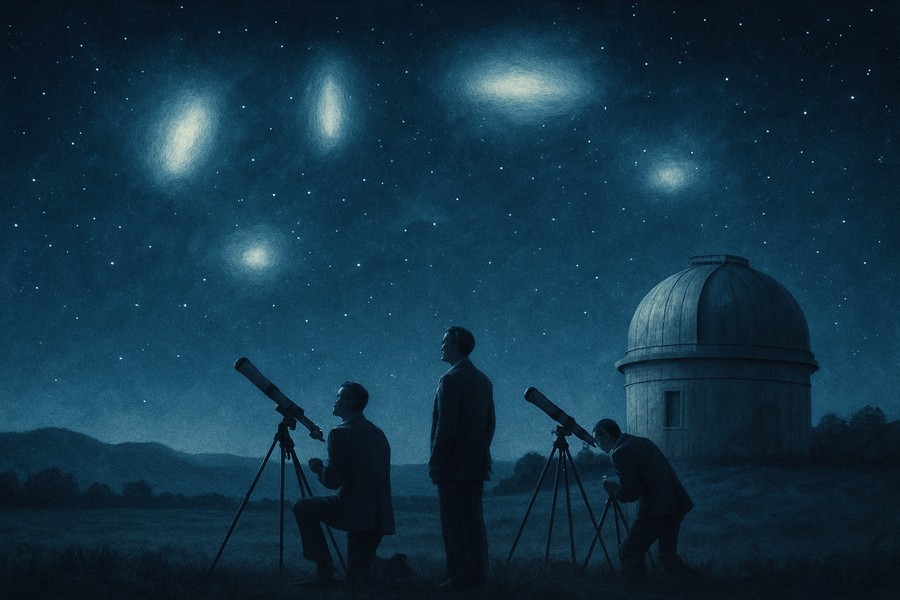
Historic Nuclear Tests Possibly Caused Unexplained Sky Phenomena
Research has unearthed a fascinating connection between the appearance of unexplained phenomena in the sky and nuclear tests conducted in the mid-20th century. The study suggests that the birth of the nuclear age may have left an indelible mark on our astronomical history, even before the dawn of the Space Age.
Analysts, including a leading anesthesiologist and a theoretical physicist, have combined archival astronomical observations with eyewitness reports of unidentified anomalous phenomena (UAPs) - the official term for unidentified flying objects - to make this intriguing discovery.
A Look at the Sky Through the Lens of History
The Mount Palomar Observatory embarked on its maiden Palomar Observatory Sky Survey (POSS-I) from 1949 to 1958. This ambitious project aimed to capture and map the entire northern sky. However, it was only during subsequent sky surveys that scientists noticed certain lights in the POSS-I data had vanished in later observations.
These "transients" - points of light appearing in one observation but absent in the next - were initially thought to be due to defects in the glass photographic plates used for recording astronomical images. However, a recent project aimed at identifying changes in the night sky across a century of observations has challenged this assumption.
Further investigations revealed that some of these transients could not be easily explained as plate defects. This sparked curiosity about whether they could be linked to human or atmospheric phenomena, particularly above-ground nuclear testing and reported UAP sightings from that era.
Connecting the Dots
The researchers compiled a dataset spanning 2,718 days, marking the days on which transients were detected. They cross-checked these occurrences with the dates of known above-ground nuclear tests conducted by the US, Soviet, and Britain, as well as recorded UAP sightings.
Interestingly, transients were 45 percent more likely to appear around the time of a nuclear test. The day following a nuclear test showed the most significant link, with a 68 percent higher chance of a transient showing up in the POSS-I data. Additionally, for every additional UAP report on a given day, the likelihood of a transient appearing rose by 8.5 percent.
Unraveling the Mystery
While these results don't provide a definitive explanation, they do suggest that both the transients and certain UAP sightings are real phenomena. If these transients were merely due to plate defects, they would not likely cluster around specific dates as the study's findings suggest.
Moreover, the link between transients and UAPs, while small, appears to be more than just a coincidence. The researchers were able to rule out a few possible explanations for the transients. For instance, they concluded that these lights were not fallout lingering in the atmosphere, since they were observed more frequently the day after a nuclear test.
Moreover, observation bias can be ruled out since scientists were not aware of transients during that period, and the dates of nuclear tests were not known to those reporting UAPs.
Though the ultimate explanation for these transients still requires further investigation, this study adds to the mounting evidence that supports the notion of transients as real observations and not just emulsion defects.
The significance of this association for a better understanding of transients and UAPs, however, remains to be explored. Future research in this area is eagerly awaited.
